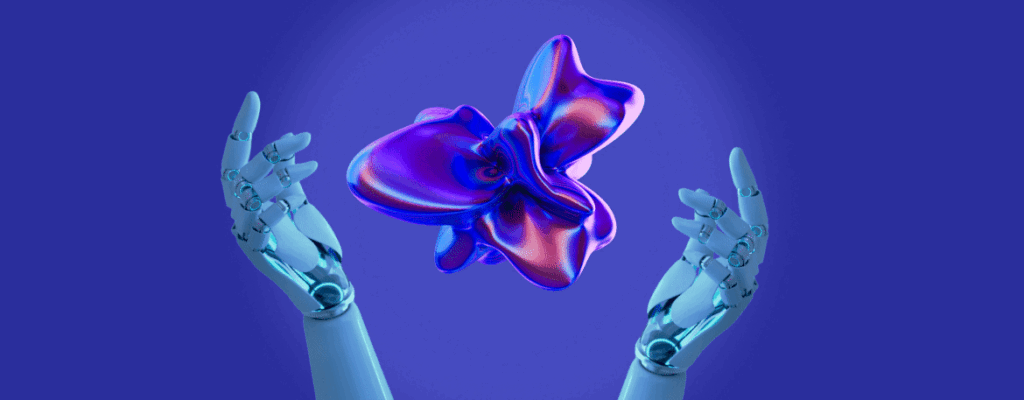Art, in its usual sense, dates back to the Stone Age with its peculiar engravings, pictographs with human, animal, or geometric designs. Perhaps since the very beginning, it has had a chance to become an indicator of the era and world’s global development. It is a way for us to express ourselves, write and recreate our history. Referring to the Stone Age, this indicator was called rock art, referring to the Middle Ages – mosaics, frescoes and relief sculptures, referring to now – AI-generated art.
Artificial intelligence (AI) has developed the ability to perform tasks commonly associated with intelligent beings. Does it really mean that we do not need Leonardo da Vinci, Michelangelo, Rembrandt and Claude Monet any more? Of course not.
AI art just allows everyone to create a digital painting without ever picking up a paintbrush or instantly generating storybook illustrations to accompany the words.
What is DALL-E and what can it do?
Nowadays, AI generates variations of human-like text, stories, articles, poetry, sonnets or even computer code based on simple descriptions.
DALL-E and DALL-E 2 are transformer models developed by OpenAI to create digital images from natural language descriptions. It wowed the world because it is a revolutionary giant leap for mankind in the fields of art.
DALL-E exhibits a wide understanding of visual and design tendencies. The fact that it imitates any style of any image, including photorealistic imagery, paintings of Salvador Dali, emojis and even Egyptian hieroglyphs, is really jaw-dropping!
AI can add appropriate details, place design elements, shadows, reflections and textures, manipulate and rearrange objects in its images without any specific prompts and instructions. For instance, Christmas imagery is automatically followed by features associated with the celebration, consequently, you shouldn’t even mention them.
Everything you need to do is simply log in, write a description of your imaginative combination and get a unique result, taking into account other users’ searches and algorithmic bias.
DALL-E combines unrelated concepts in imaginable ways and even applies transformations to existing images with rare failures. It creates new realistic images from scratch, makes edits to existing images from a natural language caption and generates different variations of artworks inspired by the original. These extraordinary capabilities resulted in lots of ridiculous AI-generated images, so there is no wonder why it is named in honor of Salvador Dali.
DALL-E Mini: endless generator of post-irony
Twitter, Reddit and 4Chan are being flooded with internet memes about creepy generated images. Most of them are truly surrealistic. Either a Logo of an armchair in the shape of an avocado, or a daikon radish blowing its nose and sipping a latte, or an astronaut riding a horse in photorealistic-style – they are just the beginning of this overarching creative havoc.
Celebrities and other well-known people have immediately become the victims of curious users. Somewhere, there is even an image of Donald Trump in the Mario Kart game floating around the Internet. OpenAI feared fraud attempts with fake images of celebrities and politicians that had appeared in the network. Imagery is limited to nothing but the designer’s fantasy. All of those creations are made with DALL-E Mini AI.
DALL-E Mini image generator differs from traditional DALL-E. Firstly, it does not include any restrictions regarding the Ethics Policy concerning users’ text-based searches and requests. And, secondly, it is accessible literally to everyone.
Due to its availability, DALL-E creations have already advertised themselves all over the Internet. One of the most serious drawbacks is the fact that DALL-E Mini reproduces diverse stereotypes, prejudices against minorities and has a reported problem with racial bias.
DALL-E AI is the first software to build an art gallery
DALL-E Mini generator was developed by Boris Dayma in close cooperation with Google and Hugging Face community in 2022. Recently OpenAI has asked Dayma to change the name of the system. DALL-E Mini is now called Craiyon and is carried out by craiyon.com platform. The developer supposes that there will be even more imitators with increasingly first-rate systems up to photorealism.
DALL-E Mini is accessible via a newly launched website called Hugging Face. To make your ideas real, type the words in the text box and click Run. It takes a few minutes to process the request. Finally, 9 similar images will appear. You are allowed to make pictures larger, save or screenshot them or even repeat your attempt with the previous action to make comics.
DALL-E Mini AI provides the possibility to imitate the world’s masterpieces. You can type the name of any artwork (e.g. “Mona Lisa”), add some strange description (e.g. “footballer”) and as a result, you will get 9 various pictures of Mona Lisa holding a ball or a football stadium in her hands.
The model can also create new paintings (e.g. Realistic oil painting of Doggy in medieval armor with a chameleon logo on a shield fighting with a dragon of low sales) that look extremely realistic. Just type “Shrek as a Greek god” and AI will turn it into good-looking surrealist artwork. The face could still be weird, but the team of DALL-E Mini is currently ameliorating the solutions.
How to cope with too much traffic?
Apparently, the model is not completely perfect, sometimes there could be a high workload of the servers, but for DALL-E Mini too much traffic is a solvable task. The model requires a lot of data processing, so the increasing number of servers gives the capability to generate images in no time without any issues. In the meantime, the user may need to try a few times to create the picture. The application is still free thanks to the monetization of the site with advertising and premium offers appearing on the page.
